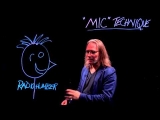Ping-ponging and Bouncing
Ping-ponging and Bouncing
Before the invention of multi-track recording, engineers, after hearing about Les Paul’s “sound-on-sound” technique, started overdubbing. However unlike Les Paul, they typically used two tape recorders, instead of just one. They would record to the first machine. Then they would playback that tape and mix the signal with a new live performance and record that to a second machine. This process would be repeated until all the parts had been this way was called “ping-ponging” or “bouncing”. Since the sound was bouncing back and forth between the two tape multi-track recorders first started appearing in studios after Les Paul received his 8-track in 1956, engineers would often submix several tracks and then either record the submix to a second machine or to an open track on the same tape recorder. This would clear tracks for more overdubbing, and was also called “ping-ponging” or “bouncing”.Just like with tape, the first digital audio workstations also had a fixed number of tracks, (usually only 8), so again, bouncing was used to free-up track space. Today, with DAWs having an almost unlimited amount of tracks, the term “bounce” refers to a mix of all the tracks in an area on the timeline.















